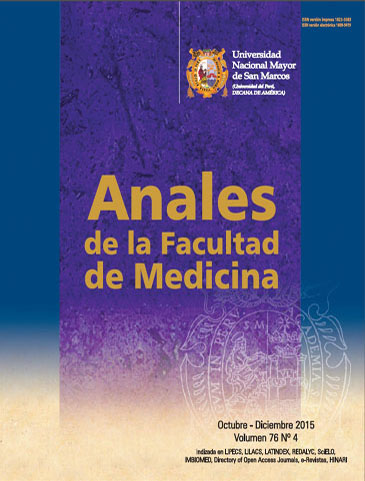BK polyomavirus-associated nephropathy in kidney transplant
DOI:
https://doi.org/10.15381/anales.v76i4.11415Keywords:
BK polyomavirus, Nephropathy, Kidney transplantation, Immunology.Abstract
Two documented cases of BK polyomavirus-associated nephropathy (BKVN) seen at Hospital Edgardo Rebagliati Martins, EsSalud, Lima, Peru are reported. Final BKVN diagnosis was confirmed by renal biopsy and electron microscopy study. Case 1: Renal functional deterioration was not controlled despite reduction of immunosuppression and addition of antiviral drugs (leflunomide and ciprofloxacin), evolving to renal failure and subsequent kidney retransplantation. Case 2: The therapeutical management consisted in intravenous immunoglobulin infusion linked to reduction of immunosuppression; this resulted in modest histological improvement and stabilization of renal function. Both renal grafts concomitantly presented BKVN and histological lesions consistent with acute rejection, pending interpretation. In conclusion presence of BK polyomavirus is a serious problem for transplanted kidneys. The best treatment is based on early diagnosis and subsequent reduction of immunosuppression. It is essential to have an appropriate methodology for precise diagnosis. Early electron microscopy is a valuable method for viral etiologic diagnosis. Retransplantation is considered a treatment option when faced with possible BKVN-related graft loss (Case 1).Downloads
Published
2015-12-31
Issue
Section
Casos clínicos
License
Copyright (c) 2015 Pedro Méndez Chacón, Nancy Guzmán Cuba, José Somocurcio Peralta, Armando Vidalón Fernández, Rafael Villacana, Carla Méndez Chacón

This work is licensed under a Creative Commons Attribution-NonCommercial-ShareAlike 4.0 International License.
Those authors who have publications with this magazine accept the following terms:
- Authors will retain their copyrights and guarantee the journal the right of first publication of their work, which will be simultaneously subject to Creative Commons Attribution License that allows third parties to share the work as long as its author and its first publication this magazine are indicated.
- Authors may adopt other non-exclusive licensing agreements for the distribution of the version of the published work (eg, deposit it in an institutional electronic file or publish it in a monographic volume) provided that the initial publication in this magazine is indicated.
- Authors are allowed and recommended to disseminate their work over the Internet (eg: in institutional telematic archives or on their website) before and during the submission process, which It can produce interesting exchanges and increase quotes from the published work. (See El efecto del acceso abierto ).
How to Cite
1.
Méndez Chacón P, Guzmán Cuba N, Somocurcio Peralta J, Vidalón Fernández A, Villacana R, Méndez Chacón C. BK polyomavirus-associated nephropathy in kidney transplant. An Fac med [Internet]. 2015 Dec. 31 [cited 2025 Jun. 5];76(4):439-43. Available from: https://revistasinvestigacion.unmsm.edu.pe/index.php/anales/article/view/11415



